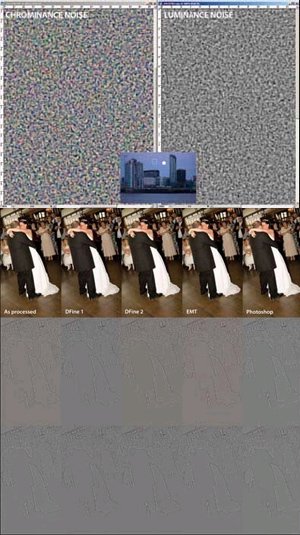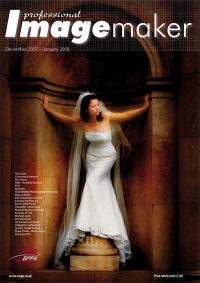articles/Photoshop/noisereduction-page1
Noise Reduction - part 1 of 1 2 3
by Mike McNamee Published 01/12/2007

In digital imaging, noise has taken the place in the 'bad list' that grain used to occupy in film days. In just the same way as grain was regarded by some as a visual enhancement of the image, some people regard digital noise in that way. There is a proviso though, digital noise is rather ugly, particularly when it is chrominance (colour-based) noise. Just as with grain, the world is filled with backroom techies striving to eliminate noise or at least reduce it. Although the camera manufacturers install software in their cameras to reduce noise, they are constrained by the relative lack of computing power in the camera and the need to process the images very quickly. Post-processing to improve the effects of noise is thus a relevant and worthwhile occupation.
All electronic devices have a base-line random amount of electrical activity going on even when they are doing nothing, the hum on an audio system being a classic example. When a signal arrives (staying with the audio analogy) it is so great that any underlying hum is drowned out. However, when a very quiet passage of music is played, the hum can sometimes be heard. What has happened is that the signal to noise ratio has become so low that the noise is interfering. So it is with a digital chip. When the chip is sitting there the pixel sites are issuing electrical signals - this is what we call 'noise'. When there is lots of light on the chip it is like playing loud music, the signal overwhelms the noise. At the other end of the scale, at low light levels, the noise becomes a significant part of the entire output from the pixel site. Noise is thus worse at low light levels (ie high ISO settings) and during long exposures (when the noise builds up over a longer period of time).
To add to the complication, different wavelengths of light affect the chip in different ways. Longer wavelengths (ie red) have more energy than shorter wavelengths (ie blue). The noise is thus worse in the blue channel than in the green channel. The green light is between the red and the blue in terms of its energy but there are twice as many green pixels as red or blue and so there is more green signal to play with. This is the basis of sharpening the green channel, it is the least noisy and so you sharpen less noise.

Having captured noise, the digital image is almost invariably sharpened, which then adds to the problem. The trick is finding the balance between sharpening for detail improvement and over-sharpening the noise. That is the purpose of the Threshold slider in Unsharp Masking, it protects the noise from sharpening while enhancing the larger detail - eg a Threshold value of about 3 leaves the film grain of a scan alone but sharpens the larger structure of the image.
If you think that this is all a bit of a mare's nest, things have come a long way since early film days when astronomers used to supercool the film plates in liquid nitrogen, super-sensitise them with horrible mercury and chrome chemicals, rub them with newts legs, toad's eyes, etc, etc!
For a number of reasons, this writer is sceptical about the use of noise reduction software, regarding it as a solution in search of a problem. At best it should be regarded as a rescue tool if you have made an error of judgement and grossly under-exposed an important shot. In a wellmanaged workflow it is far better to take other precautions to reduce noise at the outset. These are some or all of the following (with the downsides):
1. Use flash to increase the light (may not be allowed)
2. Introduce lighting (may not be allowed, time consuming and inflexible)
3. Risk a slow shutter speed with a tripod rather than bumping up your camera ISO rating (may not be allowed, less flexible, subject may be moving)
4. Use a stabilised lens (grabs quite a few stops of additional 'speed' but the subject may move)
5. Use a wider aperture lens (insufficient depth of field, heavier lenses needed)
You are currently on page 1 Contact Mike McNamee
1st Published 01/12/2007
last update 09/12/2022 14:57:00
More Photoshop Articles
There are 19 days to get ready for The Society of Photographers Convention and Trade Show at The Novotel London West, Hammersmith ...
which starts on Wednesday 14th January 2026





